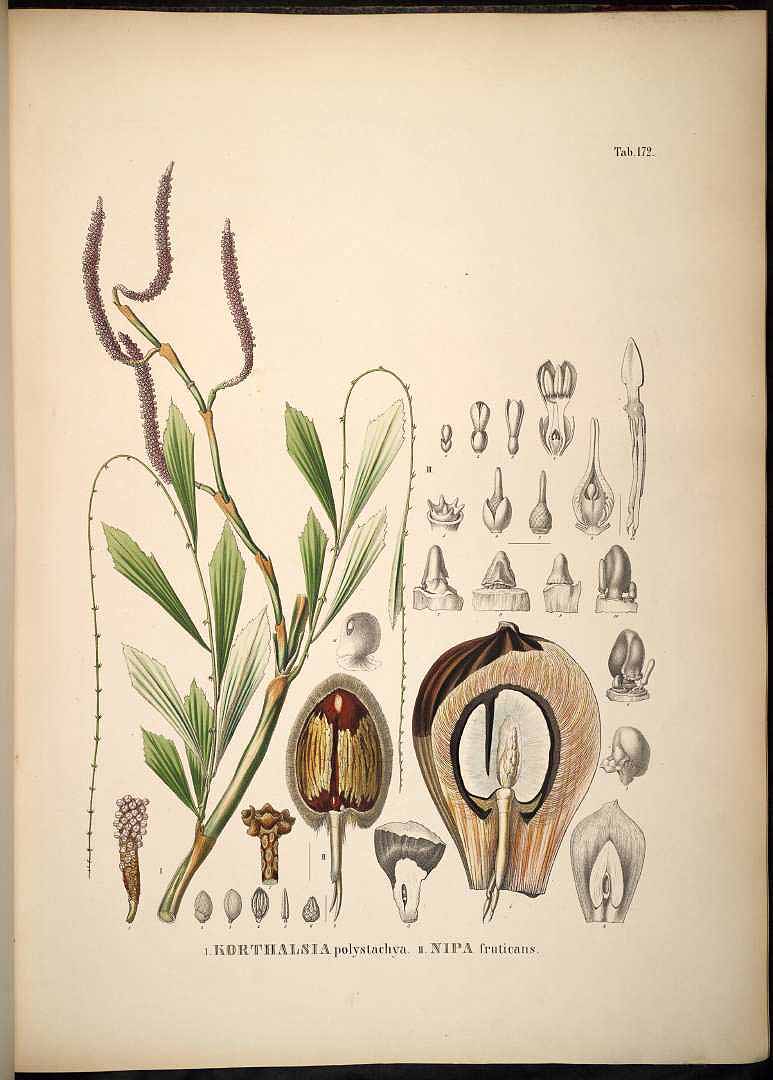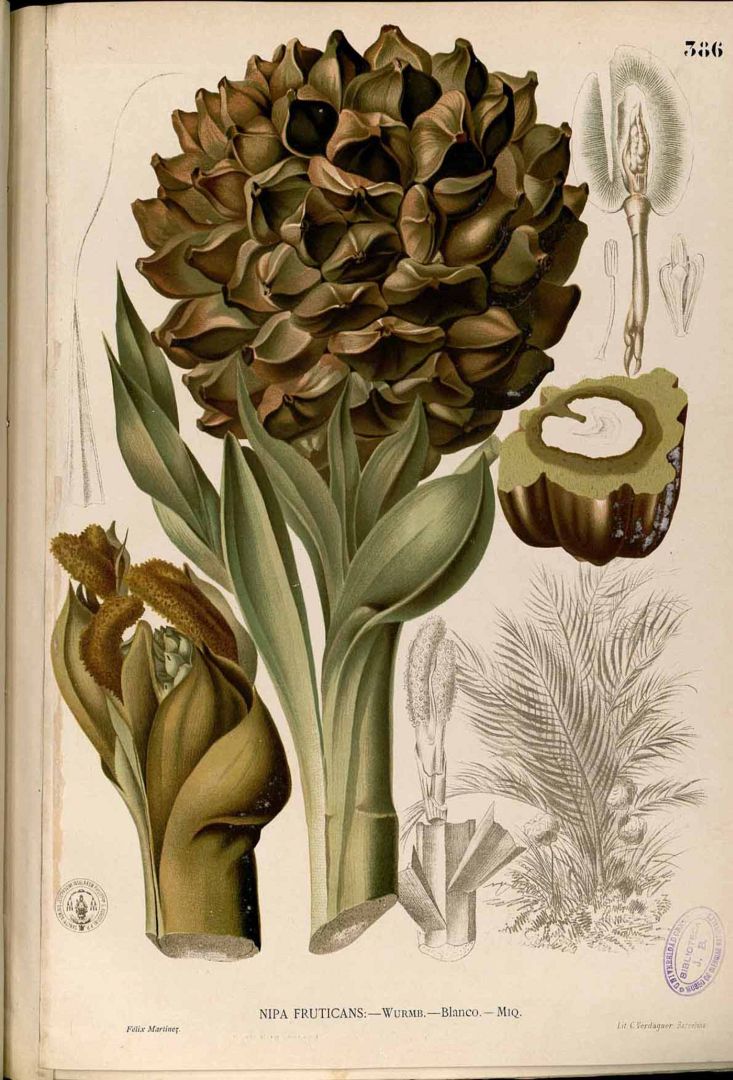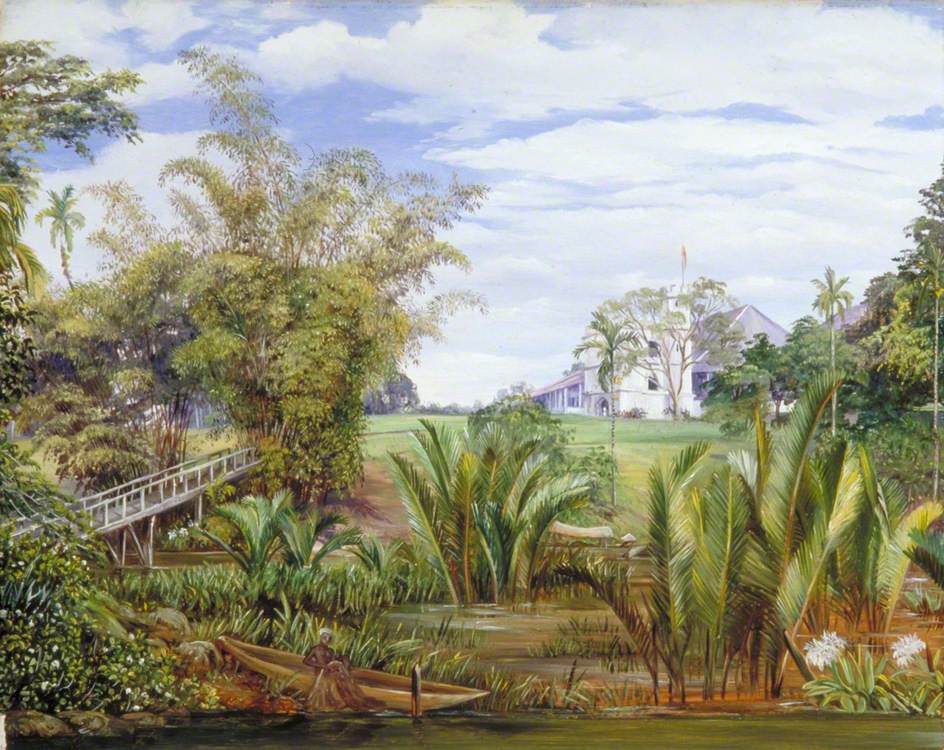! Nouveau site ici !
Vita > Plantae > Magnoliophyta > Liliopsida > Arecales >
Arecaceae > Nypa
Nypa fruticans

 | *** - **
| *** - **
Vita > Plantae > Magnoliophyta > Liliopsida > Arecales >
Arecaceae > Nypa
Nypa fruticans

Un palmier avec de grosses tiges souterraines rampantes. Il forme des touffes. Les tiges reposent le long du sol et sont souterraines dans la boue molle. Les feuilles ont des folioles suivant un axe de 7 m de l... (traduction automatique)
→suite
⬀
Le  donne accès au menu
donne accès au menu (c'est votre point de repère) 😊 ;
En dessous vous avez la classification, à partir de la vie (Vita, premier rang) jusqu'à la classe au dessus de la plante, dont vous trouvez ensuite le nom scientifique/botanique (latin) puis le nom commun (français), le cas échéant ;
C'est aussi un lien vers la fiche complète (tout comme la ✖, en bas à droite, et le +, en dessous de la description) ;
Vient alors l'illustration (ou ce qui la remplace, en attendant), la comestibilité :
Et en bas
⬂







